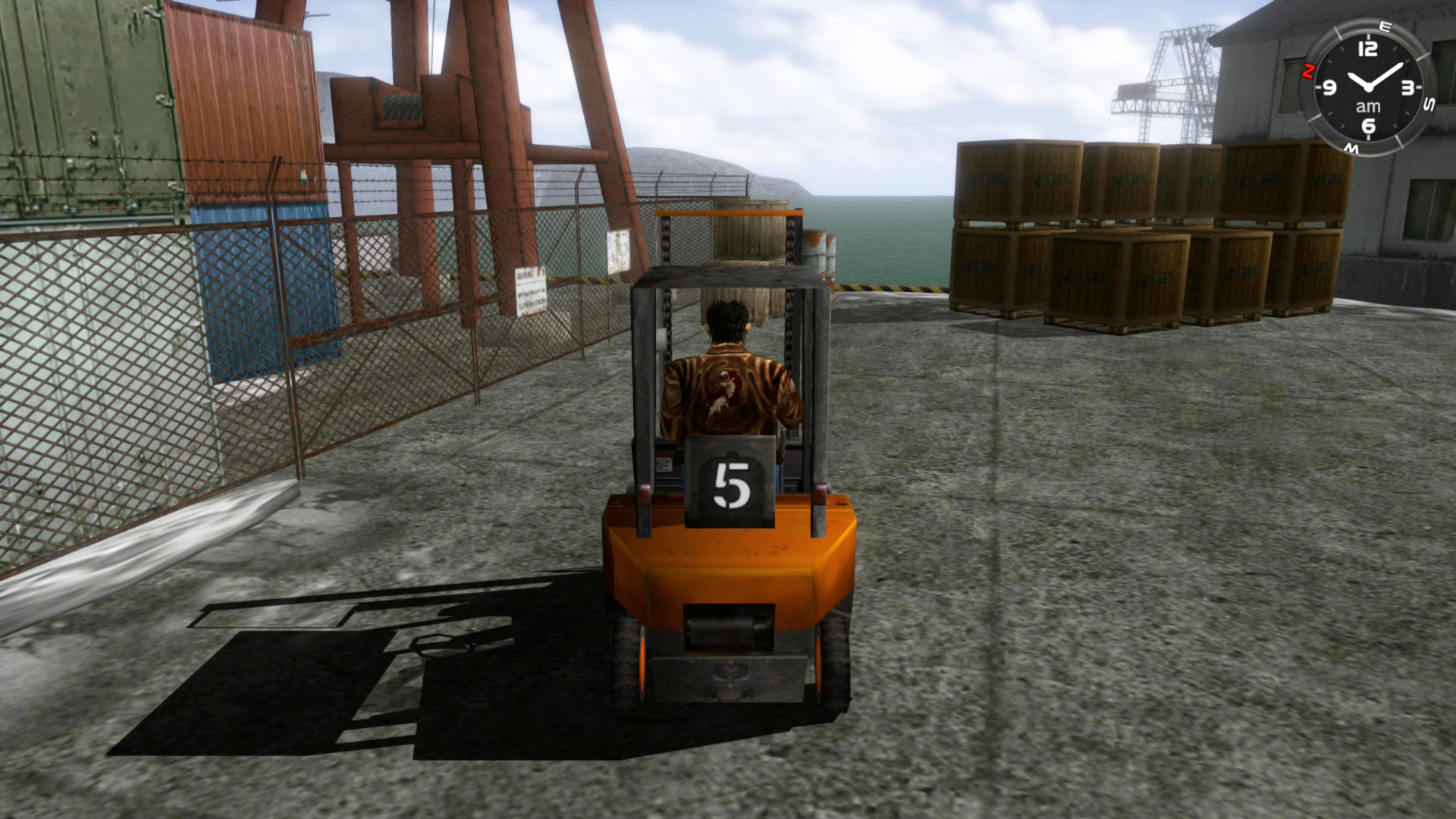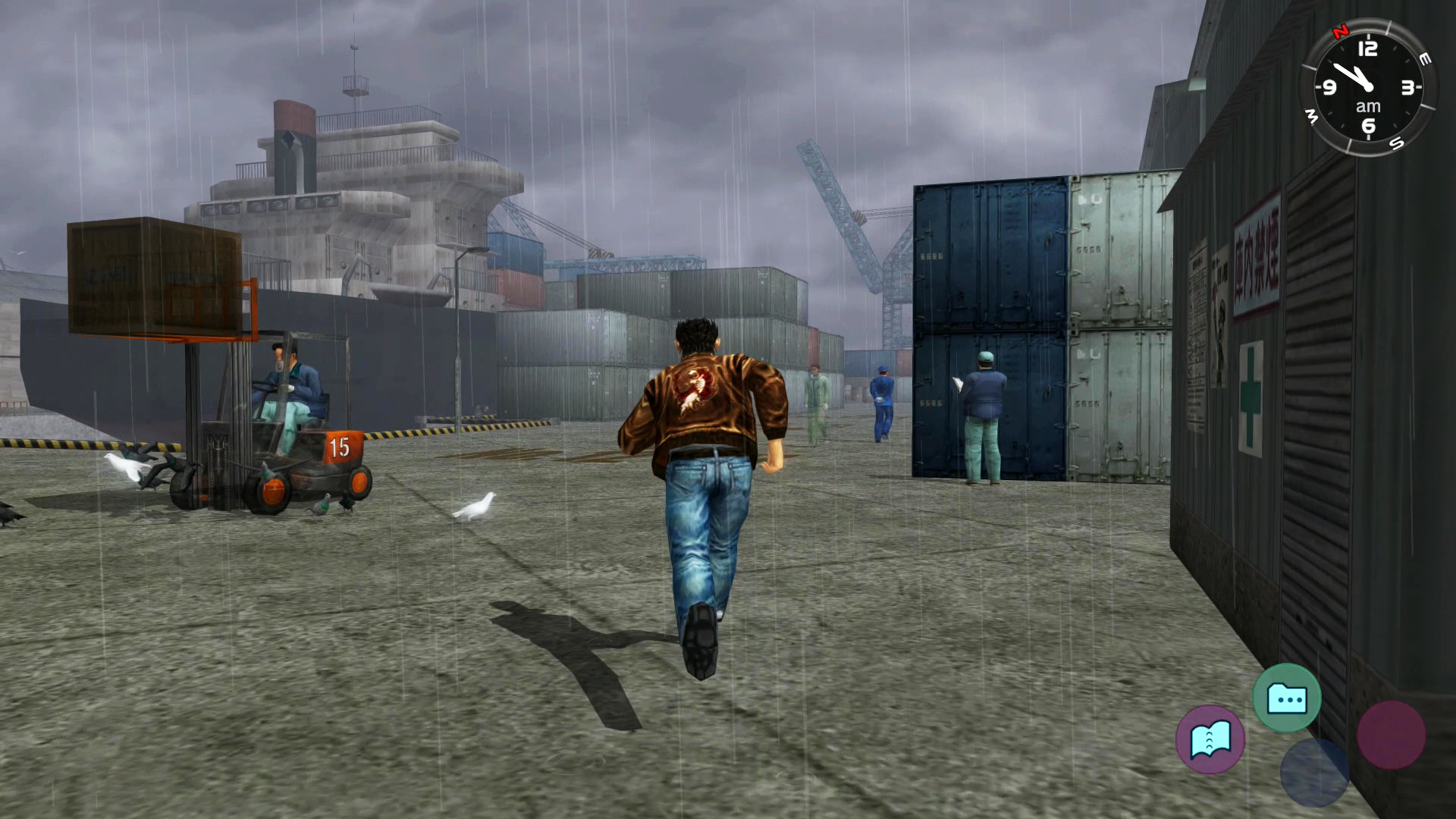Shenmue isn’t for everyone, and the make or break moment, I think, is in the last third or so of the story. Though the heart of the game is undoubtedly in its sleepy neighbourhoods and the downtown area of Dobuita, with shops, bars and arcades lining its winding streets, the harbour is when things get truly interesting - and is where the game’s devotion to the everyday and all its mundanities - which I mean with the utmost affection, as it’s the game’s strength! - is at its purest. Let’s be more clear what I’m talking about - it’s working the forklift job. Shenmue’s final stretch removes the freedom that teenage detective work provides, and locks you into a 9-5 job moving crates from one warehouse to another. Shenmue is a wonderful slice of escapist tourism that has aged brilliantly, especially for those who want to experience a taste of virtual Japan (and Japan in the 80s no less), but you could argue being put to work is going a step too far. But for me? I adore driving the forklift. I love the way it doesn’t feel like you’re driving, but gliding - smoothly locking the prongs into each set of crates, slowly reversing away, observing your hand written map as a reminder of where to go next, and taking it to its destination. Making your quota is almost redundant when the additional money you earn can’t really be spent before the story ends - as is true to life, you only have a little free time in the evenings to make use of it - but I can’t help but give it my all anyway. Honestly, if this was a dedicated game, I don’t think I’d stop playing. Thoughts, Sega? But why the forklift job is so alluring is because of the harbour itself, as in my eyes, it serves as one of the all time best multipurpose spaces. That drive to recreate everyday life is briefly cast aside each morning as the dock workers participate in a forklift race, injecting a bit of action before your shift, but also brilliantly acting as a tutorial, teaching you how to navigate sharp bends at speed, and clue you in on a faster route for the later. Or perhaps it’s the other way round? To be honest, I take the job with such gusto I lose track of where the race ends and hauling crates begins. Shenmue is made by Yu Suzuki, the creator of Hang On, OutRun and Virtua Fighter, so it’s perhaps no surprise that the harbour is part workplace, part race track and, later, at the story’s conclusion, a vast arena that pits you against a seemingly endless stream of thugs to battle at once. It’s also home to an enjoyable moment of sleuthing in the game, where you’re sneaking past guards after hours to gain entry to a particular warehouse. Well, it’s enjoyable once you know where to go. Despite all this, the harbour never loses sight of what makes Shenmue special - and that’s its attention to detail. For me, it’s where the routines of its residents are at their clockwork best. I recommend you stand still occasionally and observe it all play out - forklift trucks weaving past one another, canteen staff serving up food, foreman counting inventory. You can even open doors and search random warehouses, with seemingly no purpose but to complete the illusion of a harbour at work. Despite the looming threat of a criminal underworld lurking in the shadows, and the very real threat of running into a forklift truck round a blind corner, the harbour has the same charming, easy-going spirit as those opening suburban streets. When the story allows - perhaps during a quick lunch break - I’d recommend you take the time to people watch, observe the towering cranes at work, or try your luck at opening another warehouse to see if there’s something inside. There’s nothing else in Yokosuka like it.

